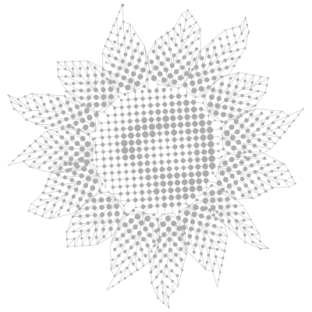Profitability vs. productivity or bright days ahead!
Greetings to all from the Agrotest Analytical Laboratory! We hope that this year you are already looking for new ways to succeed in your business, community and personal life! For our part, we are also looking for new opportunities for you to work with our laboratory in the new 2021 season, offering you new analyzes and speeding up the processing time of your samples and results. As with your efforts, none of these goals are easy. We continue to diligently improve ourselves by analyzing past experiences, relying on customer feedback and monitoring changes in the agricultural sector. We understand that last year was not the best for all of us, but we will not refrain from hoping to find greatness in 2021!
For those involved in agriculture, there is a common desire to get more. We all want to grow crops with good yields, and then achieve this yield again and again, and even exceed. But how will this extra performance come about?
First, consider the “principle of reducing profitability.” What is fundamental in this principle? According to Ron Hanson, PhD in Agricultural Economics, “the principle of declining profitability involves changing the volume of one of the inputs, while all other inputs in the production process remain the same.” This means that if we change the amount of input we add to our system (such as phosphorus fertilizers) and all other inputs remain the same (other fertilizers, seeds, chemicals, etc.), then the product return (yield) will increase first. But over time, as we continue to add more phosphorus, we will see a leveling of yields and, finally, even a decline!
Why so? The fact is that you can change fertility by adding or subtracting nutrients, but you will not be able to change productivity because it is determined by the environment and the climate in which the soil is located. As you wish, you can continue to add phosphorus fertilizers and more. But at some point, the culture that grows in this soil will stop responding to the extra phosphorus, and eventually the environment will react negatively to it. Moreover, as soon as the culture stops responding to the introduced phosphorus, you will start spending your money, not to mention creating various environmental problems.
Analyzes of soil and plant material illustrate this point well. If you see a mineral application recommendation of 0 (zero) kg / ha, you can be sure that adding any extra nutrients will not give you any extra productivity (yield) or profitability!
To analyze and assimilate all this, ask yourself a few questions about the soil you cultivate, the crop you grow, and the prices for that crop:
– Will the extra costs you need to get higher yields really make you more profitable?
– Will it only increase your costs and only slightly increase productivity?
– Does the extra yield offset these additional costs?
– Is your soil able to produce higher yields?
And finally, before you spend money on another application of mineral fertilizers (whether you need it or not?), Spend some time and analyze the costs of all these applications, as well as the benefits and likelihood of additional yields. And even better – do a soil analysis and leaf diagnostics. And if you want to discuss these issues with someone – please call us at the “Analytical Laboratory Agrotest”, we will always be happy to answer you and give advice!
This article is based on information kindly provided by Ward Laboratories, Inc.
Write to us
and we will find an opportunity
for cooperation


